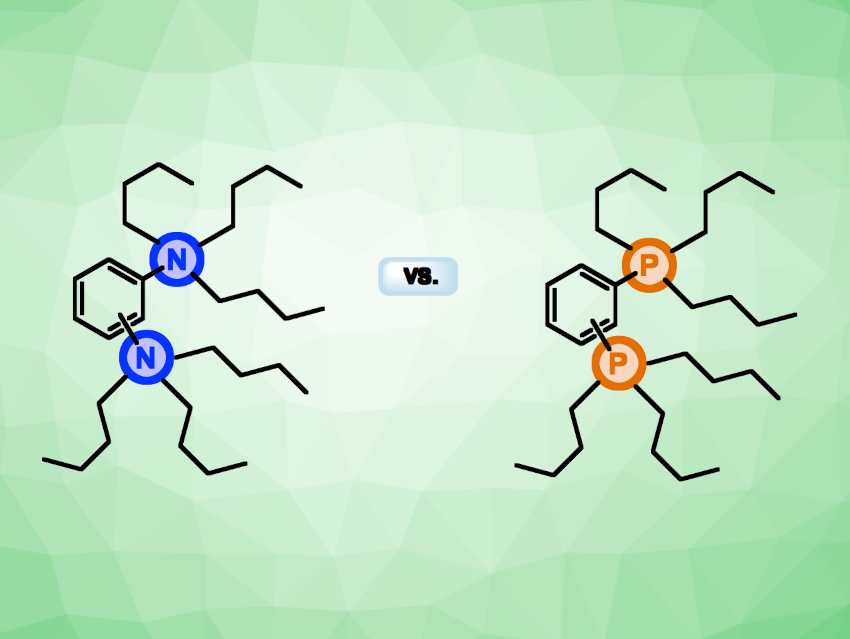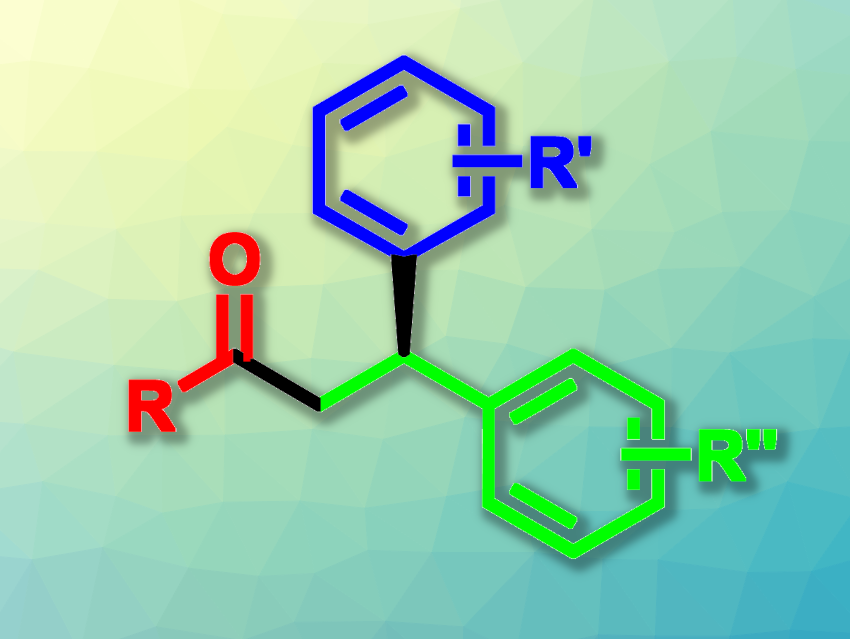Welcome to this week’s Weekly Research News Challenge!
Answer three questions about last week’s news. This time, the focus is innovative “bushy-tailed” disinfectants, a three-component difunctionalization of alkenes, and smart medical sensors to detect and alert users to potential adverse drug reactions.
 Question
Question
Quaternary ammonium compounds (QACs) are widely used disinfectants that destroy harmful bacteria by breaking apart their cell membranes. But what if we could make these antimicrobial compounds even more effective? William M. Wuest and colleagues in the U.S. have reimagined QACs by replacing the traditional ammonium groups with other functional groups, creating “bushy-tailed” disinfectants that deliver enhanced antimicrobial power.
What exactly are the functional groups, and how do they work better?
See answer
Phosphonium groups.
The team prepared a series of multicationic quaternary phosphonium compounds (QPCs) as alternative disinfectants. These compounds feature multiple short alkyl or aryl chains to create the “bushy-tailed” structure (see image below). The QPCs show potent antimicrobial activities and low toxicity, which is attributed to the combination of multiple phosphonium units with the bristle-like structure of the chains connected to them.
The News behind the Question
 “Bushy-Tailed” Disinfectants
“Bushy-Tailed” Disinfectants
November 12, 2024
Multicationic quaternary phosphonium compounds act as novel disinfectants with potent bioactivities and low toxicity
 Question
Question
Transforming simple alkenes into complex, valuable molecules in a single step is a game-changer for chemistry. Dong Xing and colleagues in China have developed a method for asymmetric acylarylation of alkenes, which uses acyl radicals to create carbonyl-functionalized products—essential building blocks for further chemical transformations. Their approach merges the precision of transition-metal catalysis with the versatility of radical chemistry—but which metal serves as the catalyst at the heart of this new reaction?
See answer
Copper.
The researchers used Cu(CH3CN)4BF4 as the copper catalyst together with a chiral binaphthyl-tethered bisoxazoline ligand, in tandem with tert-butyl hydroperoxide (TBHP) as a radical initiator, to react vinylarenes with aldehydes and aryl boronic acids. This new reaction provides access to useful enantioenriched chiral β,β-diaryl ketones.
The News behind the Question
 Asymmetric Three-Component Acylarylation of Vinylarenes
Asymmetric Three-Component Acylarylation of Vinylarenes
November 14, 2024
Aldehydes used as acyl radical precursors in copper-catalyzed radical reaction
 Question
Question
Frequent nighttime trips to the bathroom can disrupt sleep and increase fall risks, especially for the elderly. Synthetic antidiuretic drugs offer a solution. Unfortunately, these drugs sometimes trigger a serious condition called SIADH (syndrome of inappropriate antidiuretic hormone secretion), which disrupts sodium and uric acid balance in the body.
To address this, Jianlong Wang and colleagues in China have developed an advanced medical sensor that can quickly and easily detect early warning signs of SIADH—helping to prevent life-threatening complications before they arise. What type of sensor did they create?
See answer
The device is a wearable colorimetric sensor integrated into a microneedle patch. The microneedles safely extract interstitial fluid—produced by blood filtration through capillaries—and deliver it to a colorimetric sensing paper. A smartphone can read the results, while a neural network model analyzes the visual data, ensuring high accuracy even under varying lighting conditions. This device could offer early warnings for SIADH and make the use of antidiuretic drugs safer.
The News behind the Question
 Microneedle Patch Provides Early Warning of Adverse Antidiuretic Drug Effect
Microneedle Patch Provides Early Warning of Adverse Antidiuretic Drug Effect
November 9, 2024
“Smart lab” on a wearable patch provides rapid detection of changes in sodium ion and uric acid levels
- See more quizzes



